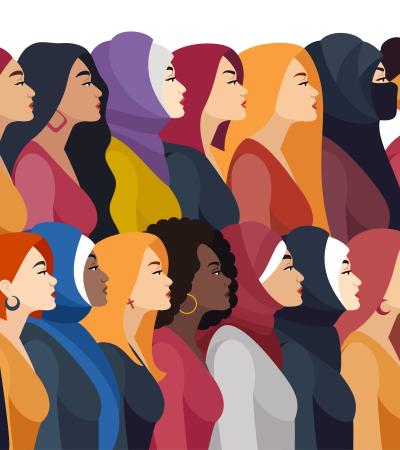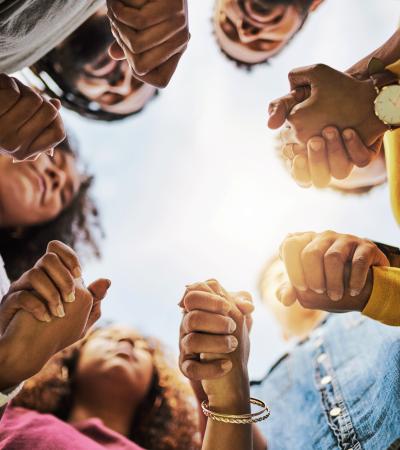Are you looking to add some historical context and deepen conversation in your book club? Do you have a group of patrons who enjoy history titles? Pairing primary source analysis with a reading and discussion program is a great way to add another layer of history and information skills to a program your library may already offer.
For examples on how to pair primary sources with relevant titles, check out the below excerpt from “Programming with Primary Sources: Women’s Suffrage – A guide for libraries,” a free resource from ALA’s Public Programs Office funded by a grant from the Library of Congress Teaching with Primary Sources program. While this guide focuses on the history of women’s suffrage in the United States, the programming strategies and Library of Congress resources mentioned within can be used to discuss myriad historical topics and related books.
>>> Download the "Programming with Primary Sources: Women's Suffrage" programming guide <<<
Pairing books with primary sources for a fuller picture of women’s suffrage
This section is adapted from Let’s Talk About It: Women’s Suffrage, an ALA project designed to spark conversations about American history and culture through an examination of the women’s suffrage movement. Let’s Talk About It: Women’s Suffrage resources were authored by Melissa Bradshaw, Ph.D., and Allison K. Lange, Ph.D.
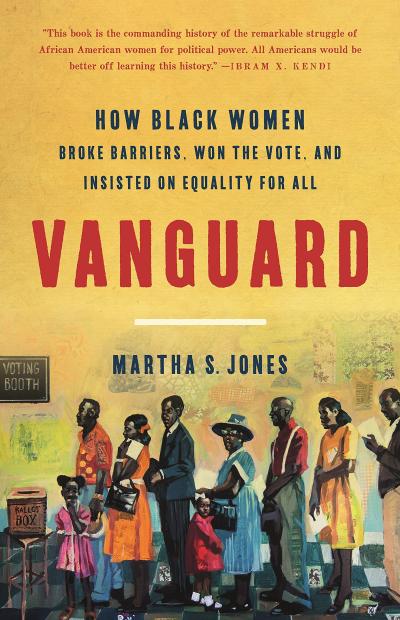
“Vanguard How Black Women Broke Barriers, Won the Vote, and Insisted on Equality for All” by Martha S. Jones
Martha S. Jones’ history stretches from the aftermath of the Revolutionary War to the present, introducing us to women leaders who insisted that the phrase “equality for all” be taken literally. Black women’s work as preachers, educators and civic leaders shaped American public culture, and yet they faced opposition from all sides, including from within national women’s suffrage organizations, whose leaders worried that their presence would jeopardize support from Southern states. They also faced opposition from within Black churches, where their wisdom and leadership challenged centuries-old prohibitions against women preaching.
These overlapping and intertwined obstacles are best described by the legal term intersectionality. Coined in 1989 by legal scholar Kimberlé Crenshaw, intersectionality characterizes a kind of discrimination different than that experienced by Black men or white women, particular to Black women’s intersecting racial and gendered identities. These are simultaneous identities that cannot be pulled apart. In documenting Black women’s intersectional struggles with racism and sexism, Jones shows us the determination, courage and political savvy they brought, and continue to bring, to the fight for equal justice.
Recommended primary source pairing: Terrell, Mary Church, et al. The Progress of Colored Women. Washington, D.C.: Smith Brothers, Printers, 1898. Pdf. The Library of Congress.
“Mary Church Terrell was the most famous Black woman suffragist. She advocated for voting rights, civil rights and antilynching, often in alliance with white women through the National American Woman Suffrage Association and others, despite the racism in those organizations. She also countered antisuffrage sentiment in Black political circles, which often focused on civil and economic rights for Black people rather than women’s suffrage. In this pamphlet, Terrell discusses the achievements of African American women.” —Tatiana Bryant, research librarian for digital humanities, history, and African American studies at UC Irvine, advisor for Teaching with Primary Sources: Women's Suffrage & Libraries.
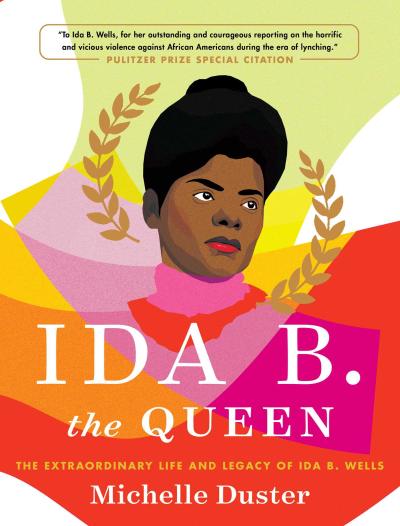
by Michelle Duster
"Ida B. the Queen" provides an in-depth look at one of the women profiled in Vanguard, Ida B. Wells-Barnett, a journalist, antilynching activist, suffragist and civil rights pioneer. Author Michelle Duster, a great-granddaughter of Wells-Barnett, and a journalist herself, tells the story of how Wells-Barnett, born enslaved in Holly Springs, Mississippi, in 1862, became a celebrated, and in some corners, feared and despised crusader for civil rights. Like the women profiled in Vanguard, Wells-Barnett fought both racism and sexism. This is seen most powerfully in her 1884 lawsuit against a railway company for forcibly removing her from a white-only train car, and in her insistence on marching alongside Illinois delegates in a 1913 women’s suffrage parade in Washington, D.C., rather than marching at the back with other Black suffragists as had been ordered by the white suffragists organizing the parade.
"Ida B. the Queen" is illustrated with archival documents, such as images of letters to Wells-Barnett from Frederick Douglass, excerpts from Wells-Barnett’s diaries, and reproductions of some of her fabled newspaper columns. Portraits and mini-biographies of other significant Black leaders, timelines and informative sidebars ground Duster’s retelling of the life story of Wells-Barnett within the larger context of the fight for equal justice from the end of slavery to the present. The book also draws a line from Wells-Barnett’s work to that of contemporary voting and civil rights advocates like Stacey Abrams.
Recommended primary source pairing: Woman Suffrage Procession, Washington, D.C. Official program woman suffrage procession. Washington, D. C., 3 Mar. 1913. Pdf.
“Michelle Duster, the author of 'Ida B. the Queen,' notes that Ida B. Wells-Barnett and others were invited to the march represented in this brochure. However, they were told they would have to march at the end of the procession. On page 70, the book states, ‘Ida integrated in the march.’ What does this mean? Can you find any mention of Black suffragists in the program?” —Susan Witte, library manager at Rockford (Mich.) Public Schools, advisor for Teaching with Primary Sources: Women's Suffrage & Libraries.
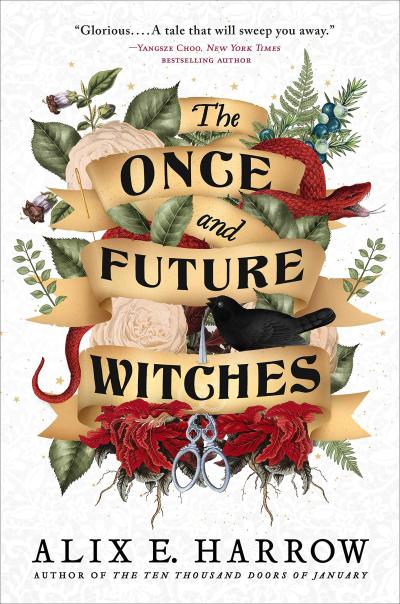
“The Once and Future Witches” by Alix E. Harlow
"The Once and Future Witches," a fantasy novel, moves the fight for suffrage to an alternate reality version of 1890s America, where witches are real and magic and spells are passed from mothers to daughters. But even in this alternate reality, patriarchal values prevail. Witches’ powers can only be exercised in secret, from within the safety of homes. Women who publicly use their powers are hunted, imprisoned and even executed. What happens when the witches of New Salem fight back, using magic to get the civic powers that come with voting?
The novel tells the story of the three Eastwood sisters, Beatrix Belladonna, Agnes Amaranth and James Juniper, who must learn to trust one another again after a painful childhood before they can convince the women of New Salem to work together to secure their political rights
Recommended primary source pairing: Catt, Carrie Chapman. Carrie Chapman Catt Papers: General Correspondence, Circa 1890 to 1947; Schwimmer, Rosika; 1905 to 1928. 1905–1928, Manuscript/Mixed Material. The Library of Congress.
“The relationship between the three sisters in "The Once and Future Witches" is often fraught with tension, but the love they have for one another is also evident. How does this letter between suffragists Rosika Schwimmer and Carrie Chapman Catt reflect that same tension/love? ”—Cara Dellatte, reference archivist in the Manuscripts and Rare Books division at the New York Public Library, advisor for Teaching with Primary Sources: Women's Suffrage & Libraries.
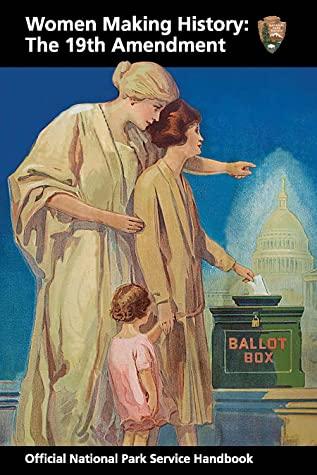
“Women Making History: The 19th Amendment” by Tamara Gaskell, editor
This collection of short essays offers a useful overview of the fight to secure the ballot for women. We discover how antisuffragists gained support as well as ways the suffrage movement developed differently throughout the United States. The collection looks at the social movements that overlapped with women’s suffrage, such as those against slavery and alcohol, and considers the ways that we remember the suffrage movement today.
Recommended primary source pairing: [Map of] Route of Envoys Sent from East by the Congressional Union for Woman’s Suffrage, to Appeal the Voting Women of the West with inset portrait of Alice Paul. United States, Apr.-May 1916. Photograph. The Library of Congress.
“Maps like this one can provide fascinating insight into history. What do you think newspaper coverage was like for this envoy? Use ProQuest Historical papers or the Library of Congress Chronicling America to look up newspapers from cities on the route. Why do you think Southern states like Texas were left off the route? How do maps expose racial, social and political inequalities?”—Regina Vitolo, faculty joint-use librarian for Lone Star College and Harris County Public Library in Texas, advisor for Teaching with Primary Sources: Women's Suffrage & Libraries.
To learn more about primary sources and programming, download the full "Programming with Primary Sources: Women's Suffrage" programming guide.

